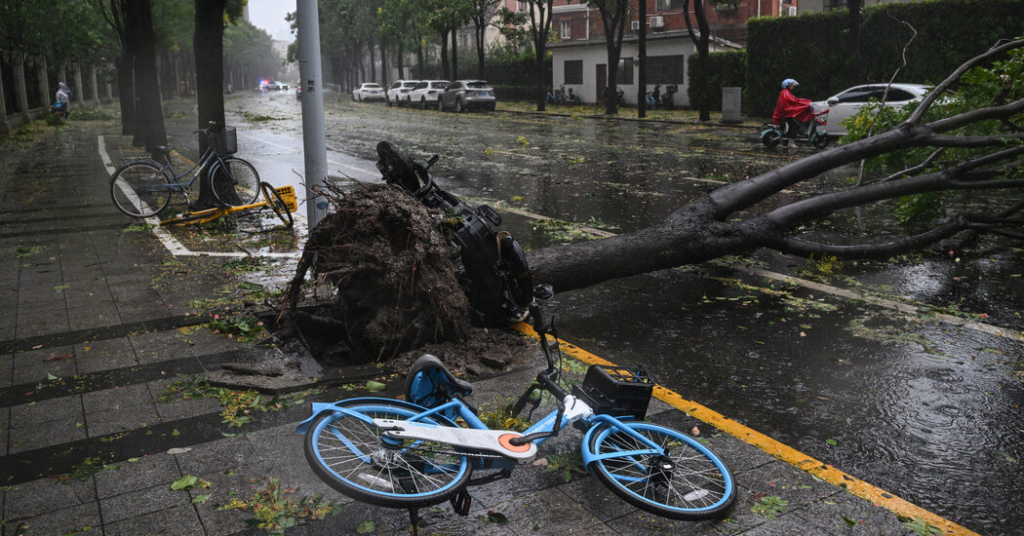Shanghai, China’s largest urban area, faced major flooding on Friday following the arrival of Typhoon Pulasan, just days after recovering from the devastating effects of Typhoon Bebinca, the strongest storm to strike the city in 75 years.
Pulasan made landfall in the Fengxian district on Thursday night, bringing wind speeds of up to 83 kilometres per hour (23 metres per second), as reported by state-run Xinhua news agency.
Although the storm is expected to weaken as it moves further inland, heavy rainfall continued to impact the city on Friday morning.
Social media videos captured residents wading through calf-deep water in several neighbourhoods; fortunately, no serious damage or injuries have been reported.
Footage released by state-owned Shanghai Media Group showed police officers in high-visibility raincoats assisting stranded vehicles through floodwaters.
Reports indicated that around a dozen cars were left stuck in the flooded areas. By 11 am on September 20, many of the affected regions had begun to dry out and were cleared of water.
Prior to Pulasan, Typhoon Bebinca had caused serious disruption on September 16, toppling over 1,800 trees and leaving 30,000 households without power.
The earlier storm led to the evacuation of more than 400,000 residents as authorities braced for its impact.
In preparation for Pulasan, parts of the city had raised their typhoon alert levels, and some ferry and train services were suspended. Xinhua reported that two weather stations recorded over 300mm of rainfall within six hours, marking the highest rainfall levels in those districts since records began.
As climate change intensifies, scientists warn that greenhouse gas emissions are leading to an increase in the frequency and severity of extreme weather events.
While China remains the world’s largest emitter of greenhouse gases, its per capita emissions are significantly lower than those of the United States.

